How To Improve Your Sketching For 2021 NATA: 11 Valuable Tips
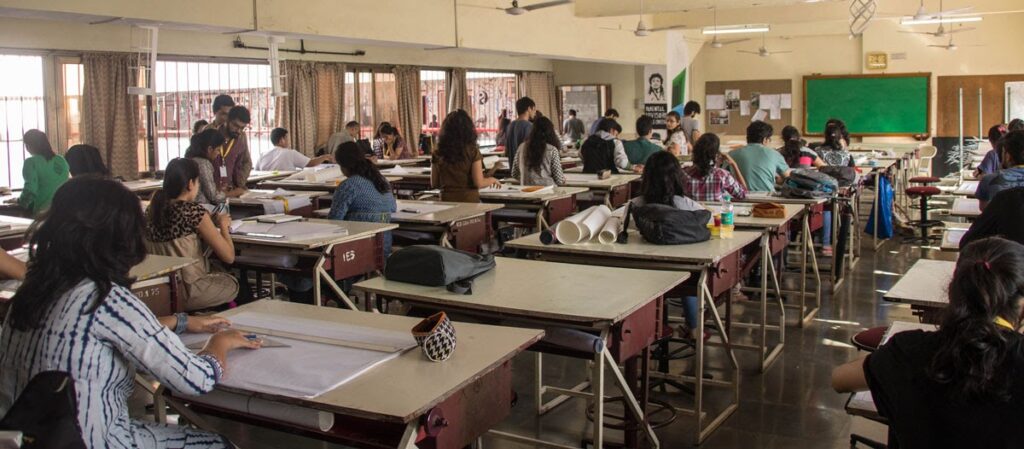
Since time immemorial, the ability to create expressive sketches and technical drawings holds a vital place in the architecture profession.
The first CAD software was rolled out in the 1960s, completely revolutionizing the world of architectural drawing.
And with that, it became possible to add more and more intricate design to the drawing, which was never thought to be possible before.
However, architectural drawing still holds an upper hand even in today’s world as it improves the visualization and creative ability of the architects.
If you are preparing for the upcoming NATA exam, you are perhaps already aware of the importance of developing good sketching skills.
You might be asked questions like drawing a perspective scene of an outdoor or indoor location including human figures or to sketch male or female figures in different attires such as a doctor, college student, lawyer, modern working women, typical housewife, etc.
When it comes to learning the art of sketching, it is essential to start from the basics. Try not to memorize or cram as it will do more harm than good.
Do I need to have extraordinary drawing skills?
This is the most common misconception that we usually see among aspiring students.
“A decade back competition was minimal and students who had amazing drawing skills often appeared for the exam. But now the situation has changed and more aspirants are appearing. With proper training, it is possible to improve the drawing skills of a student from 30 to 60 percent” AR.Senia P V(Senior IGNITE faculty, Urban Planner, CEPT alumni)
NATA questions are designed on topics such as:
- Understanding the scale and proportions.
- Memory drawing.
- Using the right combination of colors.
- Improving the sense of perspective drawing.
- 3D-drawing etc.
In addition to their drawing talent, the knowledge of candidates on the above topics are considered during evaluation. The stronger your understanding of drawing concepts, the higher are your chances to secure a good rank.

At IGNITE, all our faculties have years of experience which helps them curate course structures that are suitable for all students. We have custom designed our online training classes for NATA to enable a quick learning process.
Let us take a closer look at some of the essential sketching tips while preparing for the upcoming architecture entrance exam.
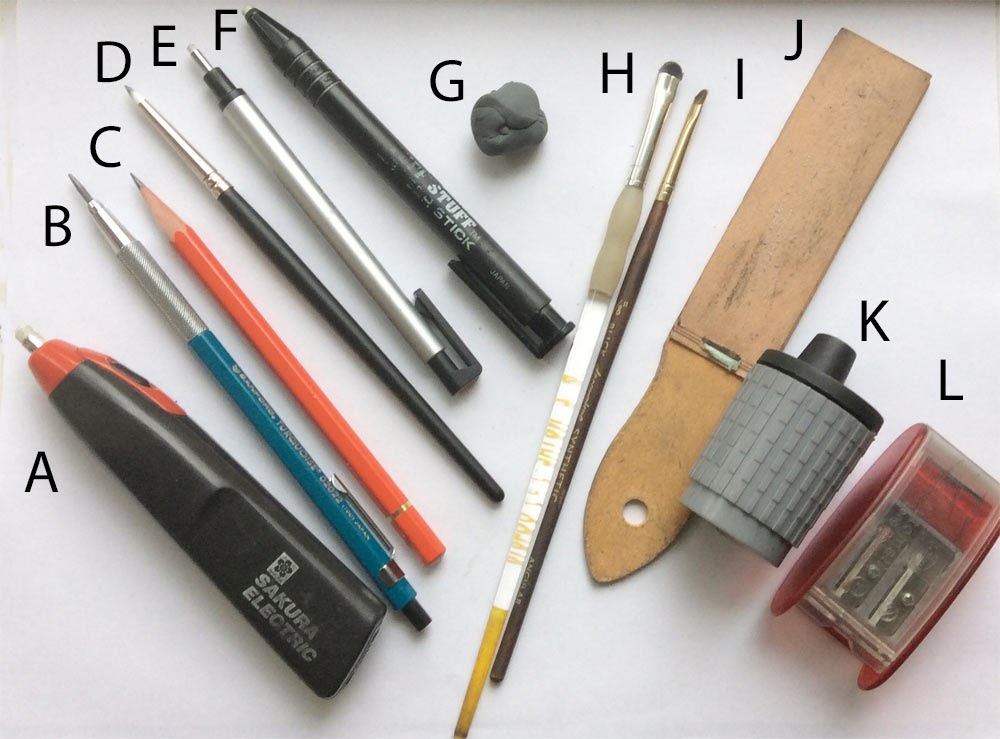
Essential sketching tips for NATA exam
Here are some vital sketching tips for patching up your drawing skills.
1. Understand your tools
Sketching is an essential part of architectural design. It is the first stage to convert an idea into an architectural design.
Several known architects and artists prefer graphite pencil as their drawing tool. NATA exam questions are designed to check how skilled a candidate is in using the pencils in the right way.
If you are planning to practice for the NATA exam, you can do so with inexpensive supplies. Just go for the necessities such as:
- HB pencils
- Basic sharpener
- Soft rubber eraser
- Mono Zero eraser etc.
Add more tools to your list based on your need.
2. Start with simplified shapes and add details as your progress
This is a common mistake made by several students as they start with their drawing practice. Most of them get into the fine details immediately after starting just to realize how awful it looks at the end.
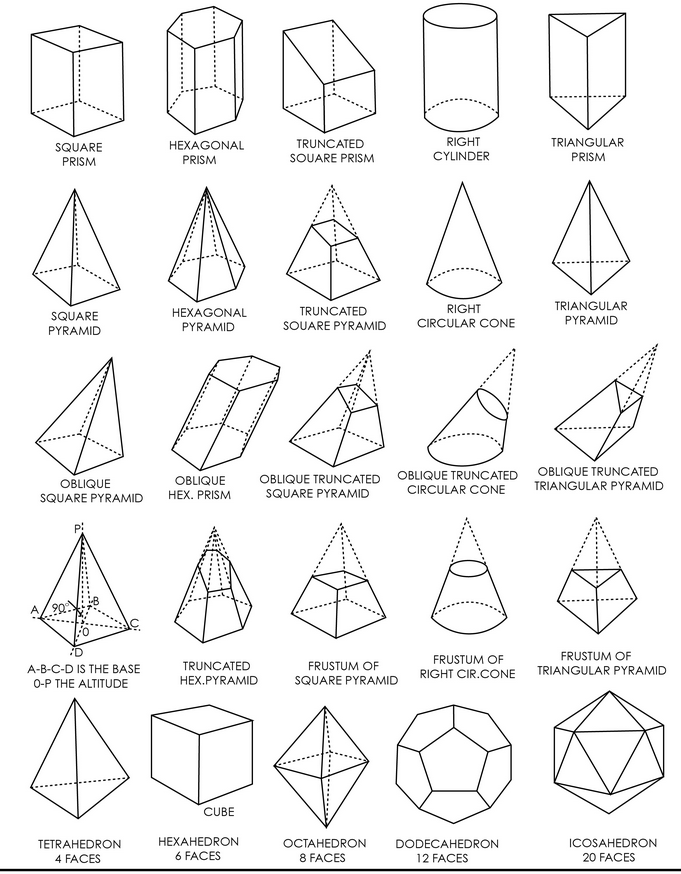
The first step while sketching is to mentally visualize the objects into simple 3D shapes such as cylinders, cubes, cones, prisms, etc.
Once you have aligned the objects in the right proportion, fine-tune your sketch to bring out the details in them.
3. Have a better grip on the edges
To define the edges of the object, you can use four different methods such as:
- Unrefined: Edges need to be deciphered by the viewer.
- Lost: When the object and background start to blend.
- Hard and thin: Imparts solid border to the object.
You could also use a combination of these as necessary.
4. Improve your observation skills
Strong observational skills can help you to draw realistic sketches that are throbbing with life. If you want to sketch an object as it actually appears, you need to understand the relationship between texture, shapes, and lines to communicate effectively with the viewer.
Try to find some time during the weekends and go to a nearby park, beach or a railway station. Observe what you see around, and once you are back, try to remember the details and sketch the image.
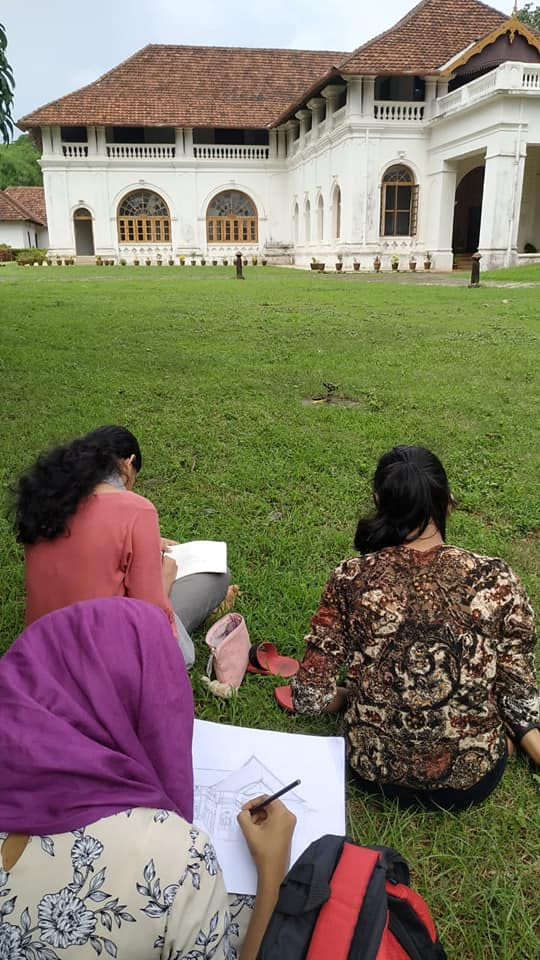
If you are running tight on time, the easiest thing to do is to click a picture and recreate the sketch on paper.
Some NATA instructors believe that to improve your drawing skills, you should not use any references. But this is not always true.
Most eminent artists and architects throughout history have used references and models to recreate images.
Eventually, you will find that with reference, your eye-hand coordination and observational skills get highly improved.
Start clicking pictures whenever and wherever you get an opportunity and have a collection of those. You will soon have plenty of photographs to work with. With sufficient practice and confidence, you can prepare the ultimate mental cheat sheet to answer any questions.
5. Know how to hold the pencil
How you hold your pencil for writing and drawing is entirely different. If you are a beginner, it will take some time to get comfortable holding the pencil for drawing.
For writing with a pencil, the primary purpose is to create legible letters in perfect alignment to express an idea.
The approach is, however, different for drawing.
Understand that although there are numerous ways for holding the pencil for sketching purposes, one method is not superior to the other.
It depends on the intricacies of the sketch and what is required at each point. During drawing, you will need to use various hand grips and shifting to different positions as well.
Some quick tips:
- Keep your hands away from the tip of the pencil &
- While drawing, move your entire arm and not just the wrist.
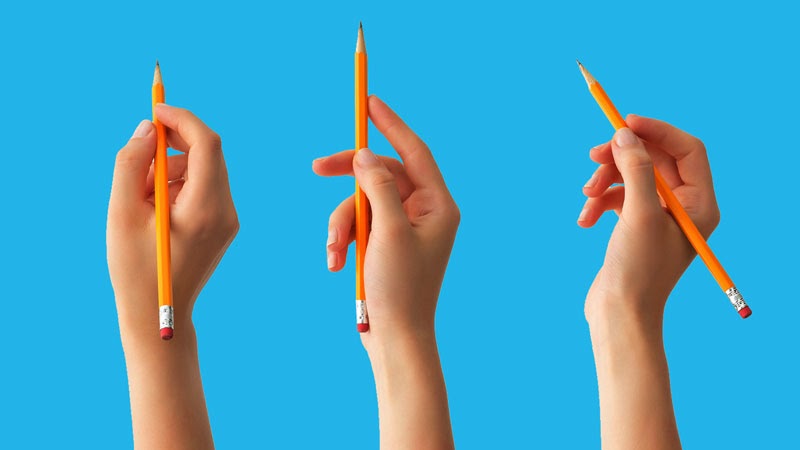
Start by drawing a rough outline at first. Refine the lines and add more details. Making mistakes is ok. After all, that’s what erasers were invented for, right?
6. Develop the habit of sketching
The secret of being good at anything is to have a passion for it.
Developing the habit of sketching will help you to fine-tune your drawing skills. Set aside some time for regular practice, and you are sure to pass your NATA exam with flying colors.
7. Experiment with different sketching methods
Sometimes certain types of sketching techniques are not suitable for a person. While preparing for your architecture entrance exam, try out several different sketching methods and pick the ones that help you accomplish the task in less amount of time with ease.
8. Add variations in lines
Over the years, we have seen that new students often spend a lot of time creating similar lines during sketching.
This is not at all required.
Try to add subtle variations in your lines during sketching. This will help you to create visually appealing and impressive sketches.
We encourage our students to hold the pencil at different angles so that it is easy to bring in the needful variations.
9. Always differentiate the textures
Make sure that you add variations for different textures in your sketch. Shading a well-lighted area is different from shading a spot under a shadow. Similarly, shading the human skin is different from shading the textures of cloth.
If the texture is rough, it will absorb more light and can therefore be depicted in darker shading effects. On the other hand, a smooth surface reflects light, and it will be a good idea to provide lighter shades.
10. Avoid smudging
When shading, it is recommended to place an extra paper underneath your hand to avoid smudging. If it is not allowed, you can also use your handkerchief as a substitute.
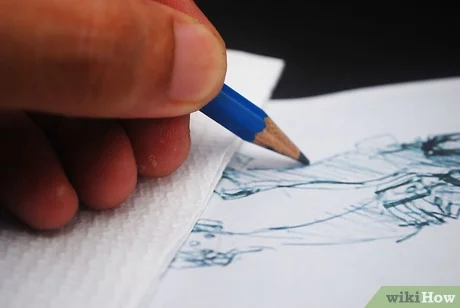
This is to make sure that the number of hand smudges on your pencil lines are minimal.
11. Try to add variation in symmetry
Let’s accept the fact that none of the naturally occurring things are perfectly symmetrical.
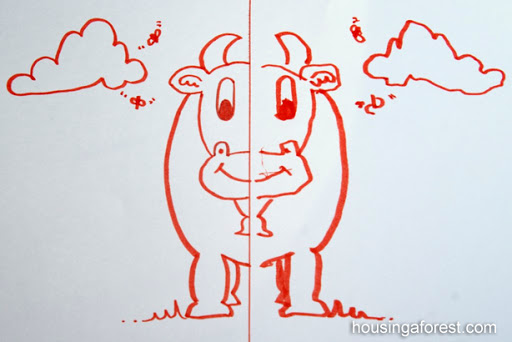
While you are sketching, it is a good practice to add subtle symmetry variations to make it appear more natural and realistic. Mirroring is an excellent way to finish the sketch quickly but make sure to add variations as well.
Examples of questions on perspective drawing
The examples discussed in this section showcase some common mistakes made by students and how our instructors have made corrections during the training session.
The sketches are made by our IGNITE students.
Sample Question: Imagine you are walking on a straight road. On your left side, you can see a series of electric posts, and residences are on the right side. There are few people walking on the footpath. Draw the view in your imagination.
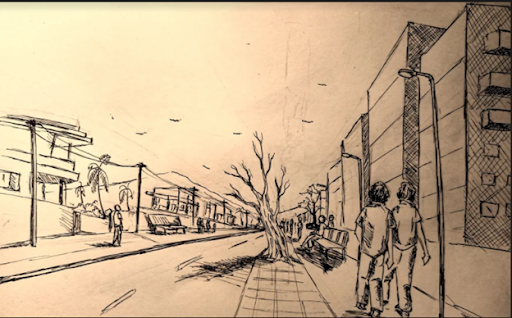
Comments:Well drawn. It is always advisable to avoid using a pen for drawing. Please check the attached edited file for your reference.
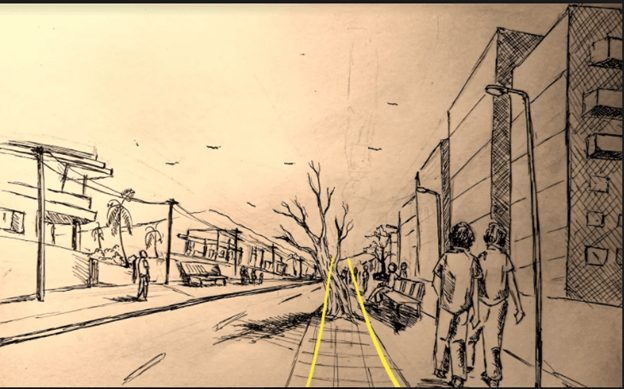
Sample Question: Draw a one-point perspective sketch of the Railway station.
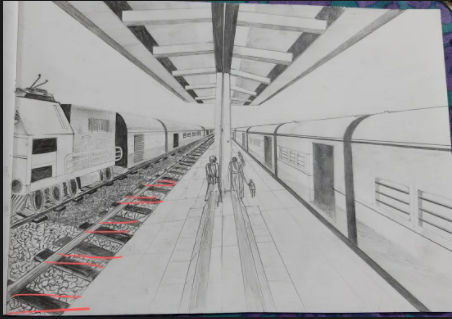
Comments: Great effort. Check the attached edited file for correction. Try to work with a time limit. Otherwise, you won’t get enough time during the examination.
Sample Question: Sketch your face by not looking at a photo of yours. Alternatively, you can also look at the mirror.
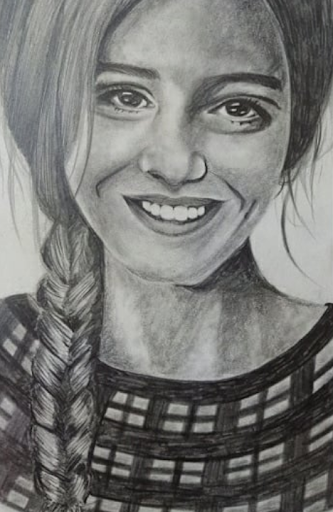
Comments: Excellent.I hope you can draw a face from your memory without reference during examination.
Example of question from 2- point or 3- point perspective sketching
Sketch a market scene using the concept of two point perspective
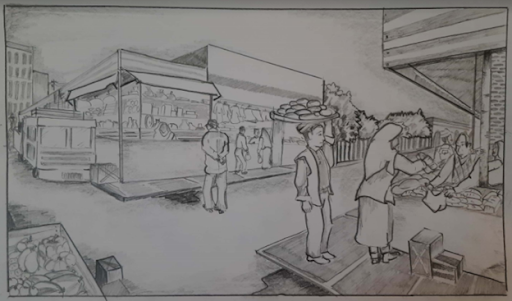
Comments: Excellent work. Keep practicing
Which pencil is the best for sketching in the NATA exam ?
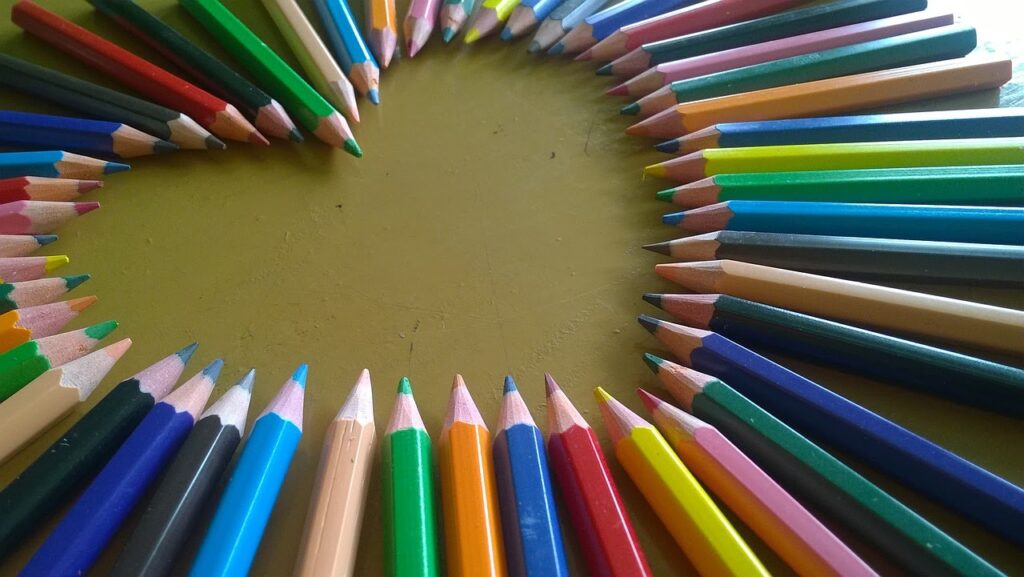
If you go to a typical book store, you can see that graphite pencils are available in various grades.
Several pencil manufacturers follow standard grades from 9H to 9B. Here H stands for hard, and B denotes black
B pencils do not contain much filler, so they are softer and produce darker lines. Pencils that fall in the H category produce light lines as they include less graphite and more filler.
It is challenging to draw dark lines on the paper with H category pencils as it requires more pressure for visible shades. It causes inferior quality lines and, worst of all, damages the answer sheet.
For the NATA exam, it is best to avoid using the H category pencils as it causes wastage of time and energy.
B works better for starting strokes. To give more sharp details, you could use 2B, 3B, and 6B as well.
The higher the grade of the pencil, the greater will be the smoothness and vice-versa. This is good for covering large portions as it is easier to spread.
“Softer pencils help to give a filled feeling to the sheets quite quickly,” AR. Senia P V(Senior IGNITE faculty, Urban Planner, CEPT alumni)
While using a sharpener, it is better to use a long point sharpener as it will help to give the tip of the pencil a more extended trip giving a better grip while sketching.
It is difficult to sharpen a higher grade pencil such as 4B or 6B. Therefore, ensure that you sharpen it before the exam.
It is recommended to use “Staedtler” or “Faber-Castell “company pencils for best quality sketches.
Final Words
When it comes to securing a better score in NATA exams, there are no shortcuts.
In this article, we have mentioned some of the essential techniques to be followed during sketching.
But understand that this is only the tip of the iceberg and you will learn several other sketching tips by attending our live classes.
Our carefully structured online classes for 42 studies are crafted to improve your drawing skills in the best possible way and with guaranteed results.
To know more, join our online classes at IGNITE.